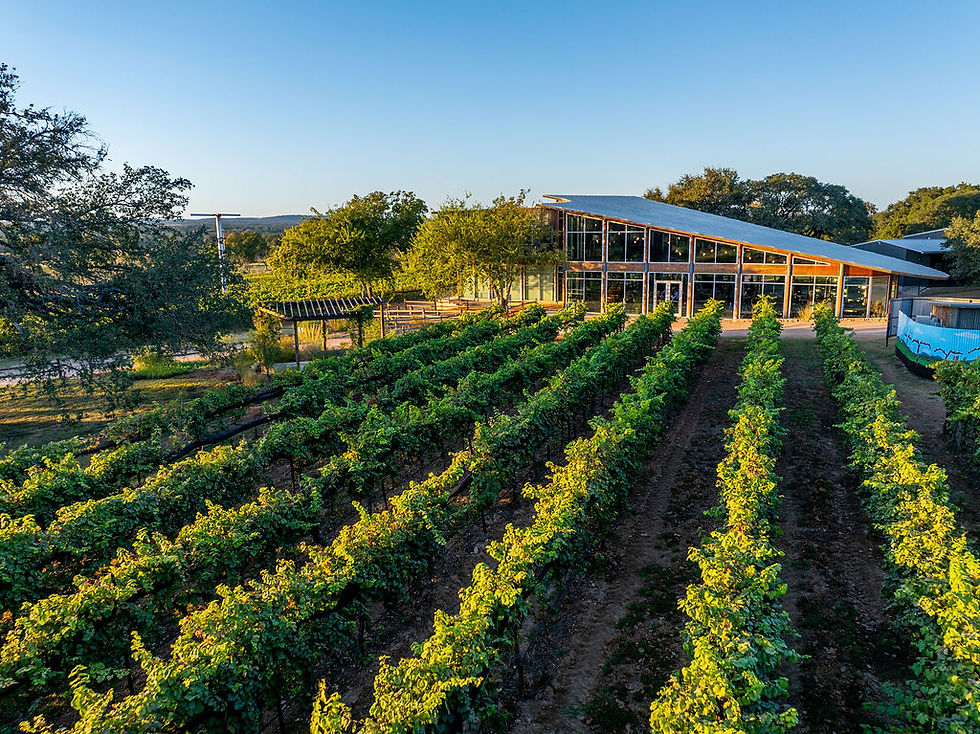Some Interesting Wines from Emerging Wine Producer: New Mexico
- andychalk
- Feb 7, 2024
- 5 min read
Updated: Feb 8, 2024
by Andrew Chalk
One of the funnier anecdotes of the 1996 Atlanta Summer Olympics described how callers from New Mexico to the Atlanta ticket office were told to “call the ticket office in your own country”. New Mexico wine has been treated something like that. The first grapes were planted in 1629 by a Franciscan friar with a very long name, but today the area is overlooked to the point of being ignored as a winegrowing part of the United States. I discuss that in a longer article elsewhere, but in this short piece I want to draw your attention to a handful of wines, descriptively covering quirky, to iconoclastic, to scintillating, that I tasted recently on a visit to New Mexico organized and paid for by New Mexico Wine, the representative organization of New Mexico growers and winemakers.
I should stress that the geographic scope of this visit was southern New Mexico. That is a loosely-defined area accessed nationally from El Paso airport at its southern tip in neighboring Texas. But it contains two of the state’s three AVAs. Mesilla Valley and Mimbres Valley. Over the best part of a week our media group visited many wineries and discovered a vibrant, risk-taking, and emerging industry. As well as wines that pay the bills, some embraced the avant-garde. Here are a few of the most memorable examples.
La Viña Winery 2021 Obsequio Rose, Mission and Sangiovese, New Mexico ($18).
Lipstick in a bottle? This vibrant pink summer wine stands out on the counter. It is also very distinctive on the palate, since it is made (65%) from the mission grape (the other 35% is sangiovese). Mission is an old-world grape brought over by the Spanish in the seventeenth century. Largely ignored nowadays, we found several made in New Mexico by La Viña Winery, Rio Grande Winery, Tularosa Vineyards, and Amaro Winery.
This wine is 100% New Mexico fruit, obtained from a one acre lot at Teardrop Vineyards. Grapegrower Barry Brown, winemaker Guillermo Contador, and founder Michael Dominguez took it on as a ‘project’. I see it having a place in wedding celebrations and it may garner a following in bachelorette celebrations as well.
Luna Rossa Winery 2016 Reserve Nebbiolo, Mimbres Valley, New Mexico ($50)
Nebbiolo is one of the most difficult grapes to grow outside its native, northern Italy. Hence it is synonymous with Piedmont, and Valtellina in Lombardy. Not only have father and son team Paolo and Marco D’Andrea got to bottle from their own vines, they have captured many of the organoleptic qualities that scream “Piedmont!” This wine is young, fruity, ‘sandpaperish’ in the texture of its tannins, with incipient notes of dried fruit. It spent no less than 60 months in oak, two to five times as long as its Italian counterparts.
Ageability is likely past 10 years from harvest for this powerful and expressive wine.
Luna Rossa Winery 2014 Aglianico Reserve, Mimbres Valley, New Mexico ($50)
Like the Nebbiolo, the grapes for this wine come entirely from the D’Andrea family’s vineyards near Deming. Aglianico is considered to be one of the best red grapes from Italy, despite being concentrated in the south (mainly the regions of Campania and Basilicata). It is known for making full-bodied red wines with great age worthiness. Perhaps the best examples from Italy are from the Taurasi DOCG.
The grape travels. In the USA, California and Texas produce strong examples. Here Luna Rossa puts New Mexico on that list. This wine was almost a decade old but still has the vibrant fruit of a young wine, coupled with big, grippy tannins that presage long aging. Do buy some, but ideally a case, opening one bottle each year over the next 12 years. By 2035, all cars will be powered by onboard wind turbines that produce only one horsepower, but you will still have one bottle to savor, hopefully near its peak.
Amaro Winery 2023 Saperavi, New Mexico (experimental)
Despite being something of the ‘National Red Grape of Georgia’ (birthplace of the avuncular Joseph Stalin), Saperavi is virtually unknown in the United States. If Amaro owner Bernd Maier enters the wine that emerges from this experiment in national competitions he will do a lot to change that.
This example is a full-bodied red that would substitute for a Rhône or Shiraz at any meal.
Bernd Maier has a touch of the Manfred Krankl about him. A German emigrée with a winery and tasting room that doubles as a Las Cruces social club. Pensive and thoughtful in conversation, he could just as much be discussing nuclear fusion as malolactic fermentation. His winemaking and viticultural life consists of a series of experiments, the more successful of which lead to commercial releases (the less successful go into proprietary blends, the oenological equivalent of the Witness Protection Program).
This saperavi deserves release. It is loaded with fresh blackcurrant fruit, burnt matchstick, backed up by grippy tannins, that powers through to a long, fruit-driven, finish. With the recent interest in Georgian wines this talismanic red grape of the country where winemaking is thought to have started, is receiving increased interest. I hope wine aficionados don’t dismiss this example before trying it, solely because it comes from a tiny winery in New Mexico. They would be missing out.
Amaro Winery 2021 Marsanne, New Mexico
From the Caucasus mountains to the hills of the northern Rhône, this humble grape, usually confined to blending, gets first class treatment as a variety. With a nose of lemon and lime, a barnyard ripeness, and a palate of similar fruits projecting ripe flavors and a profound body that coats the mouth, this is an affable wine to serve with roast poultry, venison, mediterranean mezze, or white-sauced pastas. Drink now.
Amaro Winery Fino, New Mexico ($38)
Unlike any other wine on the tour. This medium gold dessert wine has a nose of wine gums and herbaceous notes, a palate as lively as a New Zealand sauvignon blanc but loaded, to the gills, with honey flavors, all set in a full-bodied style boasting 18% alcohol. We fed just one glass to our autonomous EV and it couldn’t drive home. No trace of cloying - a testimonial to Maier’s careful winemaking. This wine is 100% 2015 Malvasia Bianca. Strongly recommended with sweet desserts and medium cheeses (for example, bloomy rind cheeses like Brie or the curiously-named Moses Sleeper). Will likely keep a decade on account of its sugar level.
Amaro Winery 2021 Alfrocheiro, Estate Grown, Mesilla Valley AVA, New Mexico
I must confess to never having had a monovarietal from Alfrocheiro before. I am sure it was in some of the Dao wines I have drunk from Portugal, as that is its most common use. Maier describes the grape as “...an early-ripening, high-yielding grape producing colorful inky red wines with fine tannins and aromas of mint, flowers, black currants, and blackberries, fresh strawberries and cherries. That is not just a word salad of wine descriptors. Quaffing this unique experience really does yield subtle hints and brazen attacks of just about everything there. I would add tertiary notes of dried fruit, leather, and forest floor, and a secondary note of bread crust.
High acid maintains the interest in this full-bodied wine. A multi-minute finish of all the referenced fruits, and more besides, makes it extremely attractive to drink now.
Like Meier, the wine is sophisticated in an unpretentious way (it won’t demand of you “Don’t You Know Who I Am!”. It will gently incent you to remember). Quaff, or consume with barbeque, hot dogs, indian meat courses accompanied by basmati rice, vegetable soups, and the like.
CONCLUSION
As I started, this is not the full-story on New Mexico wine. It is more the crack pusher’s free sample. Once you go (the alternative is ordering from the winery website, given the exigencies of the three-tier system) you will be hooked. There is a lot going on in the state that couldn’t order tickets to their own country’s Olympics, and it is a feat of a good time finding out.















Comments